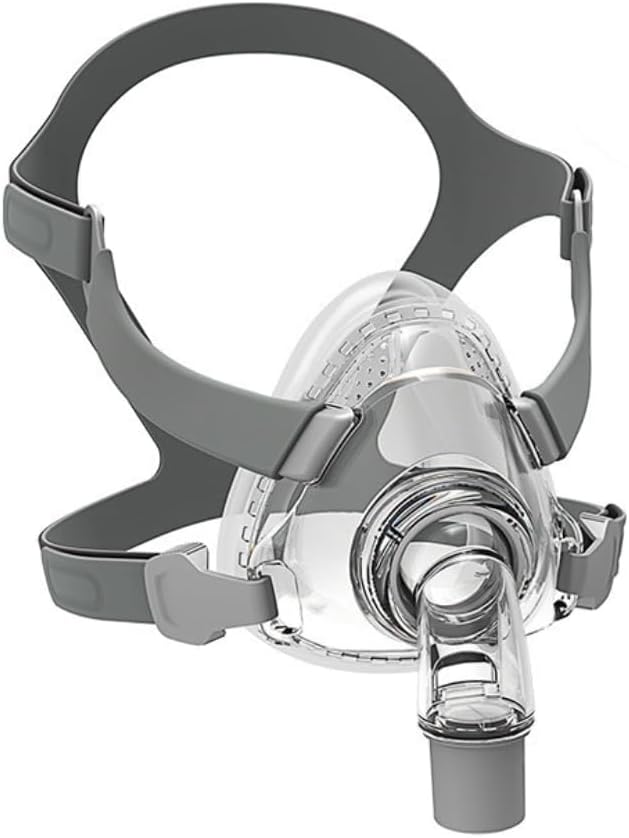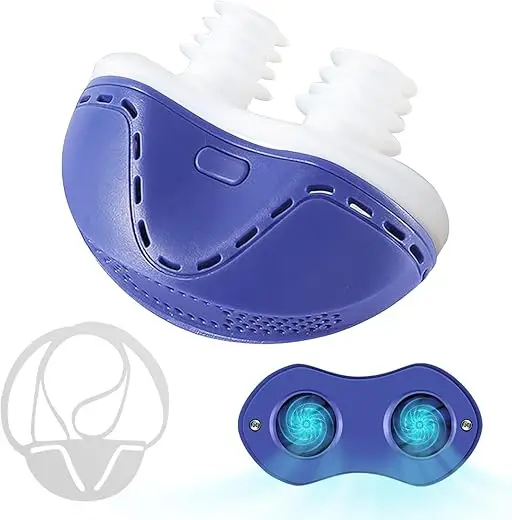Understanding Sleep Apnea
Did you know that over 22 million Americans suffer from sleep apnea, a silent epidemic that often goes undiagnosed? This common sleep disorder can disrupt your nightly rest and affect your overall health in profound ways.
Sleep apnea is more than just snoring; it involves repeated interruptions in breathing during sleep, leading to poor sleep quality and daytime fatigue. This condition is not just an inconvenience; it can increase the risk for serious health issues such as heart disease, stroke, and diabetes.
Raising awareness about sleep apnea is crucial. Many people dismiss their symptoms, unaware of the potential risks involved. By understanding what sleep apnea is, its causes, and how to manage it, you can take proactive steps toward better health and well-being. In this article, we will uncover the essential aspects of sleep apnea, ensuring you have the knowledge you need to combat this condition effectively.




What is Sleep Apnea?
Sleep apnea is a serious sleep disorder characterized by periodic pauses in breathing or shallow breaths while sleeping. These pauses can last from a few seconds to minutes and may occur 30 times or more an hour. There are three primary types of sleep apnea: obstructive, central, and complex.
Obstructive Sleep Apnea (OSA)
OSA is the most common form, occurring when the muscles in the throat relax excessively during sleep. This relaxation can block the airway, causing the individual to snore or gasp for air. Imagine trying to breathe through a straw that suddenly gets pinched—this is akin to what happens in OSA.
Central Sleep Apnea (CSA)
CSA, while less common, arises when your brain fails to send the correct signals to the muscles responsible for breathing. This type can occur in individuals with certain medical conditions, such as stroke or heart failure. An example is a patient who struggles to breathe not due to a physical blockage but rather a malfunction in the brain’s messaging system.
Complex Sleep Apnea Syndrome
Also known as treatment-emergent central sleep apnea, this occurs when someone has both OSA and CSA. It is a complex interplay of obstructive events and central occurrences, necessitating comprehensive treatment strategies.
Understanding the different types of sleep apnea helps tailor effective treatment options. Addressing the underlying mechanics of the disorder allows individuals to regain control over their sleep quality. In the next section, we’ll explore what causes sleep apnea and the various risk factors associated with this condition.
Causes and Risk Factors
Understanding the causes and risk factors of sleep apnea can be pivotal in identifying and managing the condition. Here, we delve into the diverse elements that contribute to this sleep disorder.
Obesity
One of the most significant risk factors for obstructive sleep apnea (OSA) is obesity. Excess body weight, particularly around the neck, can constrict the airway, making it more prone to blockage during sleep. The statistics are telling: nearly 70% of people with sleep apnea are overweight or obese.
Age and Gender
Age is another critical factor; sleep apnea can affect individuals at any age, but it is notably more common in middle-aged adults. Additionally, men are more likely to develop OSA than women, although the risk for women increases post-menopause.
Anatomical Considerations
Anatomical factors also play a role. Individuals with certain facial structures—such as a recessed chin, thick neck, or enlarged tonsils—are more likely to experience airway obstructions. For instance, a person with a thicker neck circumference may find themselves at a higher risk for sleep apnea.
Lifestyle Choices and Health Conditions
Lifestyle habits, such as smoking and alcohol consumption, can exacerbate sleep apnea symptoms. Smoking can increase inflammation in the upper airways, while alcohol relaxes throat muscles, both leading to blocked airways. Chronic conditions such as high blood pressure, diabetes, and asthma further elevate the risk.
Recognizing these causes and risk factors can empower individuals to take proactive steps toward diagnosis and treatment. In our next section, we’ll discuss the signs and symptoms that may indicate the presence of sleep apnea.
Signs and Symptoms
Recognizing the signs and symptoms of sleep apnea is crucial for prompt diagnosis and treatment. Many people overlook the early indicators, but these can significantly impact daily life and overall health.
Daytime Fatigue
A hallmark symptom of sleep apnea is excessive daytime sleepiness. Individuals may feel constantly fatigued, struggling to focus at work or stay alert during daily activities. For example, imagine a busy professional relying on caffeine to get through the day, unaware that the underlying issue is disrupted sleep caused by this condition.
Loud Snoring and Breathing Pauses
Snoring is another common symptom, particularly with obstructive sleep apnea. It is often loud enough to disturb not just the sleeper but also their partner. Witnessing abrupt pauses in breathing can be alarming—sometimes these are noted by a sleep partner who hears gasping or choking sounds during the night.
Morning Headaches
Many people with sleep apnea wake up with headaches, which stem from disrupted oxygen levels throughout the night. This discomfort can occur frequently, making mornings challenging.
Cardiovascular Risk
Sleep apnea does not just disrupt your nights; it poses serious health risks. Studies indicate individuals with untreated sleep apnea are at a higher risk for conditions like hypertension, heart disease, and stroke. The connection illustrates the necessity of addressing this disorder promptly: what begins as snoring can evolve into a dangerous health crisis.
Being aware of these signs empowers you to take action. In the next section, we will discuss how sleep apnea is diagnosed and the various treatment options available to manage this condition effectively.
Diagnosis and Treatment Options
Diagnosing sleep apnea often begins with a thorough medical history and physical examination. Your healthcare provider may inquire about sleep patterns and nocturnal behaviors to identify symptoms typical of sleep apnea. While some patients may suspect they have the disorder based on observed symptoms, definitive diagnosis usually requires additional assessment.
Sleep Studies
The gold standard for diagnosing sleep apnea is polysomnography, a comprehensive sleep study that monitors various bodily functions during sleep, including:
For those unable to attend in-lab studies, home sleep apnea testing (HSAT) represents a convenient alternative. It typically involves simpler equipment that can measure airflow and blood oxygen levels, providing a reliable preliminary diagnosis.
Treatment Options
Once diagnosed, treatment plans can vary significantly based on the severity and type of sleep apnea. Here are common options:
Lifestyle Changes
- Weight loss for obese individuals can reduce the severity of obstructive sleep apnea.
- Positional therapy encourages side-sleeping to prevent airway collapse.
- Limiting alcohol intake and quitting smoking can also lessen symptoms.
Continuous Positive Airway Pressure (CPAP) Therapy
- CPAP machines deliver a steady stream of air through a mask, keeping the airway open during sleep. This is often the first line of treatment and has proven effective for many patients.
Dental Appliances
- These custom-fitted devices reposition the jaw to help keep the airway open. They are especially beneficial for mild to moderate obstructive sleep apnea.
Surgical Options
- For some, surgical intervention may be necessary, particularly when anatomical issues contribute to airway blockage. Common procedures include uvulopalatopharyngoplasty (UPPP) and glenoplasty, which enlarge the airway by removing tissue.
Understanding these diagnostic and treatment pathways allows individuals to pursue appropriate care. As we navigate forward, the next section will provide insights into effectively living with sleep apnea—equipping you with tools to manage and thrive despite the condition.
Living with Sleep Apnea: Tips and Management
Managing sleep apnea extends far beyond treatment; it involves a commitment to lifestyle adjustments and practical strategies that can significantly improve daily life and sleep quality. Here are key recommendations to help you navigate life with sleep apnea effectively.
Adhere to Treatment Plans
Consistency is crucial. For example, using a CPAP machine as prescribed can greatly reduce symptoms, but only if worn every night. Establishing a bedtime routine that incorporates this equipment can help make it a natural part of your evening.
Weight Management
For those battling obesity, even modest weight loss can alleviate symptoms. Incorporating regular exercise, such as walking or swimming, not only promotes weight loss but also enhances overall health. Many individuals report feeling more energetic after incorporating physical activity into their routines.
Maintain Sleep Hygiene
Make your sleep environment conducive to rest. This includes keeping your bedroom dark, quiet, and at a comfortable temperature. Consider using techniques like meditation or gentle stretching to unwind before bed.
Monitor Alcohol and Smoking
Both smoking and alcohol consumption can worsen sleep apnea symptoms. Limiting alcohol, especially in the hours leading to bedtime, allows for improved nighttime breathing. Seeking support to quit smoking can also have profound health benefits, reducing inflammation and aiding overall airway function.
Support Networks
Connecting with others who understand your journey can be invaluable. Look for support groups or online forums where individuals share experiences, tips, and encouragement, fostering a sense of community and understanding.
Incorporating these strategies can empower you to take charge of your health and foster a better quality of life. Our journey doesn’t end here; understanding the broader significance of sleep apnea awareness and action will pave the way for a healthier future.
The Path Forward: Emphasizing Awareness and Action
Sleep apnea is more than just a snoring problem; it’s a serious health concern that can significantly impact your quality of life and overall well-being. As we’ve explored, recognizing the signs and understanding the causes are vital steps toward effective management and better health outcomes. If you suspect you or a loved one may be suffering from this condition, it is crucial to seek medical advice.
The path forward involves not only awareness but also proactive steps toward treatment and lifestyle adjustments. By prioritizing sleep health, you can take control of your well-being, improve your daily functioning, and ultimately lead a more fulfilling life. Don’t underestimate the power of a good night’s sleep — it’s a cornerstone of your health.




I’m glad more people are talking about sleep apnea. It’s not just a snoring problem; it really impacts your health! I’m considering the mouthpiece, but my friend said it felt weird. 🤷♂️ Anyone else have that experience?
Yeah, it felt awkward at first, but I got used to it. Just remember to choose the right size!
Great advice, Hannah! Sizing is key with these types of products.
Wow, I never realized how serious sleep apnea could be! 🤔 I mean, I always thought it was just snoring. The tips for managing it were super helpful, especially the ones about lifestyle changes. It’s nice to know there are products like the CPAP mask kit that can help. Anyone tried it? How’s it working for you?
I’m curious too! Does it feel bulky at all? I’ve been hesitant to try it.
Not at all! It fits snugly but not uncomfortably. Worth a try for sure!
Glad to hear it’s working for you, Mike! The Comfort Series is designed for better comfort, so it’s great to see positive feedback!
I just got the CPAP mask and it’s a game changer! I can finally sleep through the night without waking up gasping. 😴
I love that this article encourages action! Awareness is the first step, right? I might check out the CPAP hose since mine’s getting old. Any recommendations?
I got the 6-foot universal one and it works perfectly! No leaks or anything.
Good choice, Jake! A reliable hose is essential for effective therapy!
This article really opened my eyes to sleep apnea. I had no idea it could lead to such serious health issues. 😟 I’m going to ask my doc about it next time. Also, anyone know if those anti-snoring mouthpieces actually work?
I’ve tried one and it was decent. Helped a bit, but I still prefer my CPAP. They’re both worth a shot though!
Great point, Sarah! It often depends on the person, so it’s good to explore different options.
I appreciate the awareness this article brings. I used to overlook my partner’s sleep issues, but now I see how crucial it is to address them. The lifestyle tips are really relatable too. Anyone else found success with these changes?
Absolutely! We changed our diet and my spouse’s snoring reduced significantly! It’s worth making those adjustments.
That’s awesome, Tom! Lifestyle changes can make a big difference!
This is all very informative, but wow, the thought of a CPAP machine freaks me out a bit. 😅 The full face mask seems so bulky. How do people get used to wearing it?
Exactly! It takes some time, but many users report significant improvement in sleep quality.
You just get used to it! It’s weird at first but you’ll sleep way better. Just give it a week or so!
I’m still on the fence about all these products. Are they really necessary? I mean, can’t I just sleep on my side and hope for the best? 😂 Anyone else feel that way?
I used to think that too, but side sleeping wasn’t enough for me. The CPAP changed everything!
While sleeping positions can help, for many, using these products significantly improves their quality of sleep.
Honestly, I thought sleep apnea was just a joke until my buddy told me he stopped breathing in his sleep! 😳 The signs and symptoms section was a bit scary though. I’m wondering if those noise-cancelling ear plugs help drown out the sound of snoring? Anyone tried them?
Yes! The ear plugs are a lifesaver. I can finally sleep without hearing my partner snore! 😂
Happy to hear they’re working for you, Emily! Ear plugs can help many people get quality sleep.